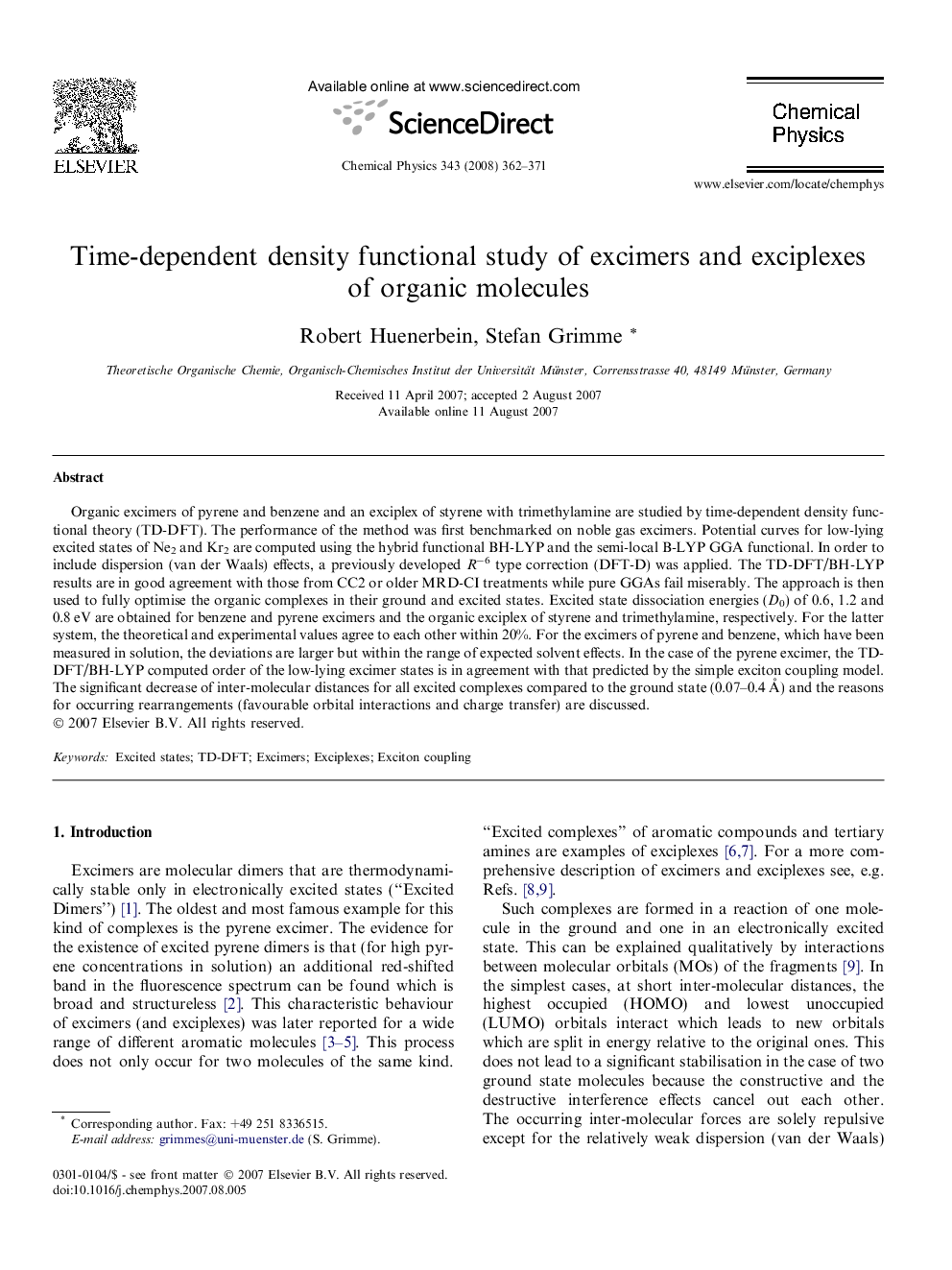| Article ID | Journal | Published Year | Pages | File Type |
|---|---|---|---|---|
| 5376256 | Chemical Physics | 2008 | 10 Pages |
Abstract
Organic excimers of pyrene and benzene and an exciplex of styrene with trimethylamine are studied by time-dependent density functional theory (TD-DFT). The performance of the method was first benchmarked on noble gas excimers. Potential curves for low-lying excited states of Ne2 and Kr2 are computed using the hybrid functional BH-LYP and the semi-local B-LYP GGA functional. In order to include dispersion (van der Waals) effects, a previously developed Râ6 type correction (DFT-D) was applied. The TD-DFT/BH-LYP results are in good agreement with those from CC2 or older MRD-CI treatments while pure GGAs fail miserably. The approach is then used to fully optimise the organic complexes in their ground and excited states. Excited state dissociation energies (D0) of 0.6, 1.2 and 0.8Â eV are obtained for benzene and pyrene excimers and the organic exciplex of styrene and trimethylamine, respectively. For the latter system, the theoretical and experimental values agree to each other within 20%. For the excimers of pyrene and benzene, which have been measured in solution, the deviations are larger but within the range of expected solvent effects. In the case of the pyrene excimer, the TD-DFT/BH-LYP computed order of the low-lying excimer states is in agreement with that predicted by the simple exciton coupling model. The significant decrease of inter-molecular distances for all excited complexes compared to the ground state (0.07-0.4Â Ã
) and the reasons for occurring rearrangements (favourable orbital interactions and charge transfer) are discussed.
Related Topics
Physical Sciences and Engineering
Chemistry
Physical and Theoretical Chemistry
Authors
Robert Huenerbein, Stefan Grimme,
